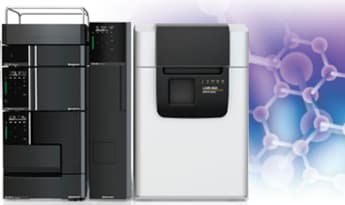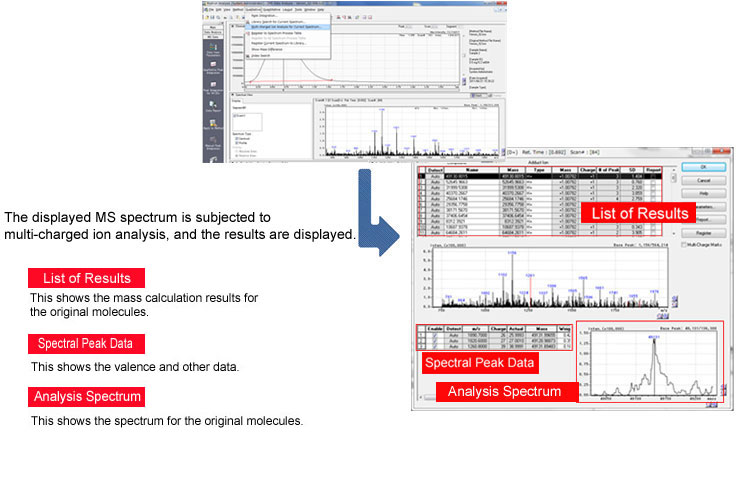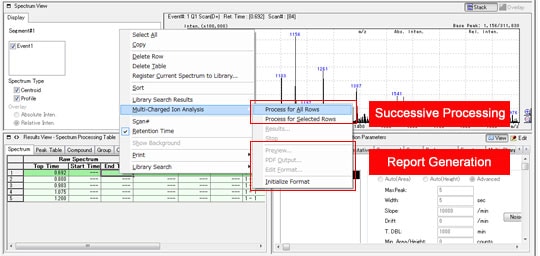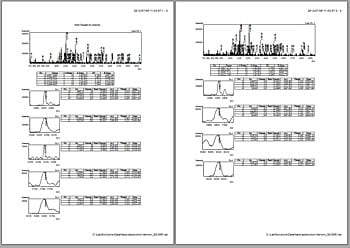Multi-Charged Ion Analysis Software
LabSolutions LCMS Optional Multi-Charged Ion Analysis Software
Estimates the Molecular Weights of Macromolecules

When analyzing compounds with multiple ionization positions using the ESI method, multi-charged ions are generated. For example, even if a compound has a molecular weight of 10,000, if there are ions with a valence of 20, they are detected with an m/z ratio of 501, whereas ions with a valence of 10 will have an m/z ratio of 1,001. As a result, compounds with molecular weights exceeding the measurement range of a mass spectrometer can be measured. This software calculates the molecular weight of a target compound based on data obtained from a multivalent ion MS spectrum.
Simple Operation
Display the MS spectrum and select the menu to perform the multivalent ion analysis.

Automatic Processing of Multiple Peaks
MS spectra can be analyzed in succession, increasing analytical efficiency. In addition, spectral data from the Spectrum Process Table is linked to the multi-charged analysis results, providing for a smooth sequence of procedures from analysis to report creation.

Reports
Results can be printed in a LabSolutions report containing the sample data. In addition, the spectral data can be selected, enabling reports to be output on just the target compounds.
Flexible Analysis Parameters
The spectral smoothing, peak detection method, and type of adduct ions can all be changed according to the analysis.

News / Events
-
Shimadzu has released the LCMS-8065XE
The new LCMS-8065XE is a triple-quadrupole mass spectrometer with EVOLVED, EFFICIENT, and EXACT capabilities. These exceptional capabilities ensure high reliability and enhanced productivity, empowering the laboratory for the future.
-
Latest issue of Shimadzu Journal, featuring Environmental Analysis, has come out.
This issue showcases advanced technologies and research tackling the global challenges posed by PFAS. As part of Shimadzu’s ongoing commitment to sustainability and problem solving, we strive to reduce environmental impacts and build a better future.
-
New High Resolution Accurate Mass Library for Forensic Toxicology
Perform forensic toxicology screening for drugs of abuse, psychotropic drugs, pharmaceuticals, pesticides, and natural toxins using this high-resolution accurate mass database.
-
Shimadzu has released the Shim-vial™ H glass, S glass.
Shimadzu provides high-quality vials that thoroughly eliminate these risks by visually inspecting each vial, allowing them to be used with confidence.
-
INTERNATIONAL MASS SPECTROMETRY CONFERENCE 2024
Visit the Shimadzu booth at the International Mass Spectrometry Conference (IMSC) 2024.
-
Metabolomics 2024
Shimadzu Lunch Presentation at Metabolomics 2024
Date: June 20th, 2024 (Thursday)
Time: 12:25 – 1:25 p.m.


